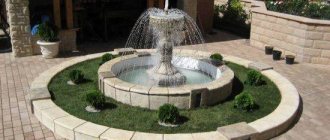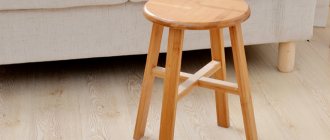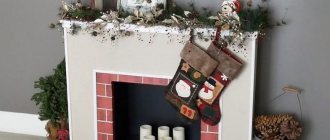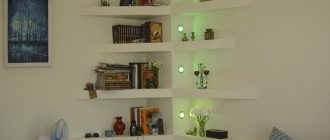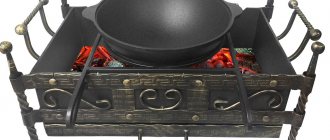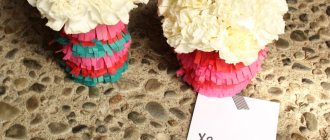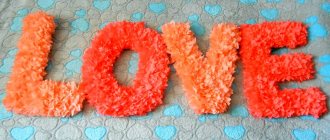A decorative fountain and waterfall for the home is an excellent design solution that performs several functions at once. Firstly, the waterfall humidifies the air, which is important during the heating season when it becomes dry. Secondly, it has a therapeutic effect on the nervous system, promoting relaxation. Thirdly, it makes the atmosphere in the house cozy and unique.
Water is soothing and cool on a hot day.
Types of indoor waterfalls
Waterfalls are distinguished by their shape, how high the water rises and how it flows. The following varieties are distinguished.
- Exotic - it uses artificial stone of various textures and shapes, living plants, shells, jugs, mirrors. As a rule, this type of waterfall always has a fence.
Important! The design of such a waterfall is always large, so this factor is taken into account during installation!
- Classical. This design represents a continuous stream of water flowing over the glass. Another name is “waterfall on glass.” They don’t use any decorations, it’s a simple waterfall look.”
- Combined. The principle of pouring water is similar to the previous type, but the waterfall itself has decor in the form of stones, plants and other elements.
It is important to have a pump and a place to turn it on.
You can do everything else yourself. Also, according to the type of installation, decorative waterfalls are divided into continuous and collapsible, those that move, and those that sing. The type of design depends on the location in which it will be located.
Kinds:
- floor;
- wall;
- desktop;
- columns;
- partitions.
A DIY indoor waterfall is a worthy alternative to expensive factory products.
Fountain model without pump
What is a self-assembled fountain without a pump? The main elements are three plastic tanks of different volumes with a height of 40 cm and a diameter of 60 cm. In this case, the walls of the tank must be coated with acrylic varnish, and cobblestones should be placed on the bottom so that the tank is approximately half filled with them.
The walls of the container can be made green, then the illusion of a natural pond will be created. To decorate the plastic surface of the tank, you can use small containers with aquatic plants that are mounted on the walls.
Water circulation will be ensured according to the principle of communicating vessels, when liquid from a tank located above flows into a lower one. For small-sized fountains constructed by hand, three tanks are usually used, two of which will be on the same level, and the large one at the bottom.
Of course, a fountain without a pump does not mean that it is not possible to build one of a fairly large size. Many masterpieces of landscape art were created using precisely this technology, when pumps simply could not be used. However, there are a number of issues that still need to be addressed.
Therefore, if you need to build a large fountain in which the jets will hit high and under high pressure, you will still have to use an electric pump.
DIY indoor waterfall
In order to install a home waterfall with your own hands, it is not necessary to resort to the help of professionals. Many people do it on their own, it’s not difficult, the main thing is to follow a certain algorithm of actions and approach it with full responsibility.
It will turn out completely unique and will be relatively cheap.
The very first stage is to determine the type of waterfall, the place where it will be located, and its size. These indicators determine what materials will be needed during the work. Once the scope of work is determined, the appropriate materials and tools are purchased.
Further actions depend on what kind of waterfall will be installed.
Tabletop waterfall
This is the most common type of waterfall that is installed in their homes.
Connect the pump pump to the container. To do this, make a hole.
Connect the water supply hose to the pump.
Important! It should be smaller in diameter than the hose for an airtight and tight connection!
Place the container and pump on the stand. Next, put a hose on the tube from which water will be supplied. The pump is placed in a cardboard box or decorated at the end of the work.
The hose can be passed from the side, pulled into the recess on the edge of the pot, and pulled out through the hole in the center.
Cut off the excess part of the hose and treat the hole with liquid silicone.
Additional Information! At this stage of work, it is important to check the operation of the pump, since it will be more difficult to dismantle the finished waterfall later!
They create a relief at the waterfall using construction foam. Here I do everything to my liking; it is important to consider the size of the slide being built up. Let it dry.
The home waterfall is assembled after the construction foam has completely dried. Glue is applied to the artificial slides and covered with the material to be decorated.
Decorate the fountain with rocks and plants.
When decorating, small indentations are made for water so that it flows beautifully. This is done using a hot gun.
The final stage is to treat the entire surface of the waterfall with a protective layer and check the operation of the pump. Decorate the pallet.
Just remember to change the water from time to time.
You can enjoy an indoor waterfall created by yourself!
Wall waterfall: operating features
One of the main features in extending the performance of a home waterfall is its correct installation.
Properly selected, assembled and installed elements should operate reliably and without failure. If the water blooms in the receiving bowl of the waterfall, or plaque appears on it, you can use specialized chemicals, or correct the situation by installing filtration equipment. At the end of each season, it is recommended to remove the pump from the pond and clean it.
The article discussed the issue of home, apartment and garden waterfalls. In addition, a method for making your own design was presented, which every home craftsman can handle.
Waterfall on glass
This type of waterfall is more difficult to install, but it looks very stylish and original. To create such a design you will need:
- cellular plexiglass;
- hose;
- pump;
- check valve;
- lighting system.
The first step is to make a stand from a material that does not allow water to pass through.
A compressor and a check valve are installed on it, and a power supply system is also placed.
The plexiglass is firmly fixed to the base, and water is poured into a container placed on a pallet. A hose is lowered into the water. In order for air bubbles to flow in the water, you will need an acrylic spray. It is also installed on a pallet.
Dishes for collecting water are mounted behind the podium so that they are not visible.
Note! The water that will be in the waterfall must be distilled!
Plexiglas is degreased before use. The decor of the waterfall is made with stones or other natural materials.
Indoor glass waterfalls can act as a dividing partition.
This is a great design solution! In addition, such a living wall will not get boring even after a long time.
Making a home waterfall with your own hands is not difficult, and the end result is especially pleasant, since you put your own strength into the process!
Varieties
Before we talk step by step about the features of organizing this or that, you need to understand the types of home fountains.
They can be divided into 2 large categories:
- With pump
. Allows forced circulation of water. The device is extremely simple, reliable and efficient in operation. Pumps can differ in power, size, and produce different pressures. Here you will need to use a submersible pump. Choose the brand at your discretion. But a better option is one that works from the network; - Without pump
. On YouTube and on thematic forums you can find options for installing fountains without pumps in an apartment or house. Only here the design will be open. The downside is that then you will need to connect a pipe from the water supply to the fountain.
Yes, it could be a small fountain, some kind of mini-structure, or a more massive option, installed not on the table, but in the middle of the room, for example.
Tabletop and floor fountains can also be divided into several types, which are determined by the characteristics of water flow.
- Waterfall
. The most popular solution. Here the water flows neatly and elegantly from top to bottom; - Cascade
. Here too there is a movement from top to bottom. Only additionally there are several thresholds; - Classic
. This is the case when the water shoots up. Not the best option for indoor placement; - Stream or lake
. Beautiful, but more suitable for country houses and local areas. Rarely placed indoors.
What to choose from this variety, everyone will decide for themselves.
Before you make your own home fountain with your own hands, be sure to look at photos of different options, videos about their manufacture, and also read our material. Here we will give some recommendations so that the craft will pleasantly please you not only with its appearance, but also with its practicality.
Homemade waterfall for a garden or cottage
Waterfalls in garden plots are a real decoration! Creating an artificial waterfall with your own hands at your dacha is not at all difficult.
You need to know some installation nuances, purchase the appropriate materials and follow consistency in work.
There are several types of decorative waterfall.
- Fixed (stationary) – represents a sculpture. These can be found in parks and squares, but many install them in their garden plots.
- Submersible - they are installed in reservoirs.
Form and composition
There is no strict classification, but the following main types of compositions can be distinguished:
- a free-standing small decorative waterfall;
- a waterfall with a pond at the foot;
- a waterfall from the flow of one body of water into another, located one level below;
- a cascade of three reservoirs;
- a cascade consisting of an artificial stream flowing through part or all of the site;
- a waterfall on an island in the middle of an artificial reservoir (can be considered a type of fountain).
Necessary materials
In order to understand what and how much material will be needed, first determine the type of waterfall and its size. But there are three main components, without which not a single waterfall on the site can do.
The design of a site is rarely complete without constructing a reservoir.
- Storage capacity.
- Pump.
- electrical power source. Additional elements are stones for creating a cascade, hoses, sand, crushed stone, waterproofing, concrete mixture.
Additional Information! Construction film is sometimes used as a storage vessel!
Choosing a location for installation
It is best to place a waterfall wall in a passage area, for example, in:
- wide corridor;
- hall;
- hallway;
- space near the stairs (for those who have a two-story apartment).
Such places are usually not used to their full potential, but a waterfall will create the appropriate atmosphere and enliven the interior. You can also place a waterfall wall in the dining room or living room to decorate them. A waterfall is great as a zone divider.
Additional aspects and tips:
- It is not recommended to install a waterfall in living rooms (for example, in bedrooms), because the incessant noise of water will begin to irritate after a month or two;
- the system requires constant power, sockets providing this must be carefully closed to prevent accidental entry of water;
- the size of the open space around the waterfall must be at least 30 square meters so that water evaporation does not exceed the permissible possible humidity of the room, otherwise this may lead to damage to decorative materials, for example, peeling of wallpaper.
Choosing a place for a waterfall
A decorative fountain will last a long time if the following factors are taken into account when choosing a location:
- place it away from direct sunlight, as the water will evaporate or there is a high probability that it will bloom;
- installed away from buildings, as the wind can irrigate the walls with water drops;
- installed in a place empty of trees and shrubs, this harms the trees, and leaves can constantly fall into the waterfall container.
The entire procedure for constructing the bowl, all the technological and nuances completely coincide with the construction of the pond.
"Environment"
The design of the wall around the waterfall in the interior is also of great importance. It is thanks to the original frame that the waterfall can fit into any design. If you do not live in an environment of strict high-tech, use a variety of decor - stonework, mica mosaics, branches collected in an armful in the interior - and create a real center of attraction!
- In the photo, the waterfall is located in the center of a massive column - what could be more harmonious than wood and water? Here we see how freely the designers treated the form, turning the recess into a kind of viewing window.
- In the following illustration, the waterfall is divided into two parts, and it is difficult to come up with anything more original than this. If you have been thinking about an entrance arch, you can use a ready-made solution.
- And this illustration makes it clear that it is difficult to overdo it with the design of a waterfall. Can you imagine a discreet and controlled Niagara? The nature there is lush, colorful, lush. Attach tropical butterflies for the interior to the wall - and the puzzle will finally be completed.
Communications
Necessary communications to create a waterfall:
- pipes that will be in the water treatment system;
- a device that collects the top layer of water and supplies it to the filter;
- wires for lighting.
The entire filtration system is installed at the bottom of the container.
In the future, they can be hidden by decorating with stones. All these communications are positioned in such a way that the shield is close to the waterfall itself.
Important! At this stage of work, be sure to check the operation of the pump!
Basis for the cascade
The base must meet several requirements:
- be moisture resistant;
- wear-resistant;
- be resistant to temperature changes.
Typically, concrete blocks are chosen as the base, which are then decorated.
These blocks are used to form a cascade of the required height; they can be left unattached to each other.
The first stage is positioned in such a way that it partially covers the place where the communications are located.
Subsequent steps are always smaller than the previous ones.
The lowest step is decorated with a border, which is subsequently decorated.
Where water outflow is planned, the walls are made smaller in height.
Making a water spout
Ready-made designs are sometimes purchased as a vessel for pouring water, but a bowl can easily be made on your own using improvised means. A plastic container in which a longitudinal hole is made is suitable for this. They bend it outward, and the water will flow down it.
In order for water to flow there, a small hole is made at the bottom and a hose is inserted.
Additional Information! The hole should be made slightly smaller than the diameter of the hose itself!
Sequencing
You can take a frame part as a basis. To make it, you will need timber. The internal dimensions of the structure itself should allow the box to fit inside the frame and take a stable position.
When the box is already placed inside, its bottom and walls are lined with plastic film, preferably dark in color and opaque. The film is used to completely seal the structure. For this purpose, you can lay out the film in several layers.
Then you will need to cut 2 boards the same size as the height of the glass. Their function is to fix the glass wall to the frame. Veneer will be needed as finishing. Wooden lining may also be suitable for this purpose.
Tempered glass is mounted in the center of the box, above which a board is installed to secure the glass. When this work has already been completed, you can proceed to installing the pump and connecting plastic pipes through which water will circulate.
To attach the pipes to the side posts, you need to use special rings, which are sold at a plumbing store. The top pipe is additionally equipped with a hole so that the leaking liquid flows directly to the top of the glass. The hole size can be arbitrary. To begin with, it is usually done small, and then, if necessary, it can be increased.
After this, the frame must be sheathed with a special material intended for these purposes, and then painted. The wooden components of the structure are coated with a transparent water-repellent varnish. Stones are placed inside the box as decoration, after which water is poured into its lower part and the pump is turned on.
After connecting the pump to the electrical network, you should check the operation of the fountain. As an additional decoration, you can create color effects using LED lighting.
After connecting the pump to the electrical network, you should check the operation of the fountain.
We install waterproofing of thresholds
Thresholds require high-quality waterproofing. The film used after the construction of the pool is used as film. Any waterproofing fabric and agrofibre are also suitable.
Waterproofing is done on both sides, leaving a slight overlap on the curbs.
After the waterproofing work is completed, the installation of decorative stones begins. They are attached to the waterproofing; a moisture-resistant sealant is chosen as the glue.
Installing equipment
This is the final stage in the construction of an artificial waterfall. The compressor is attached to the bottom of the tank, a device is installed on the surface to collect the top water and filter it, all other equipment is placed in a shelter built nearby.
Decorate the waterfall to your taste, you can plant plants that love moisture nearby, and lay out the bottom with beautiful gravel.
This design will perfectly humidify the air in the summer!
How to make a fountain in the courtyard of a house
The decorative fountain is also popular in landscape design. It also solves the problem of air humidification on summer days and serves as a worthy decoration for the site!
Fountain device
Fountains can be stationary or submersible.
Regardless of what type of fountain is installed, the device is almost always the same. This is a pump (underwater or above-water), a pool, a pipeline, various nozzles that spray water.
If it is a stationary fountain, then choose a sculpture.
Determine the type, size and shape
If the type of fountain is clear, then the size depends on the place in which it will be located and on personal preferences. The shape is chosen in accordance with the general style of the landscape; it can be rectangular, square, or round.
The simplest type of design is a jet home fountain. When the jet flows upward, more than a few jets break up.
Choosing a place
A decorative fountain is installed in places where it is clearly visible, but away from direct sunlight. An excellent solution is to install it in a recreation area.
During installation, the movement of groundwater is also taken into account.
If the structure is planned to be large, then nearby buildings and vegetation are taken into account. It is not recommended to place decorative fountains and waterfalls for the garden near trees, since the waterproofing layer can be damaged by tree roots. When choosing a location for a fountain, take into account that the pump will be powered.
Selecting pumping equipment
The pump is the heart of a decorative fountain and waterfall, so its selection is approached with special care. The design of the pump consists of continuous circulation of water through the generated pressure. It consists of the compressor itself, pipeline, hoses, and filter.
Sometimes, for a home fountain made by hand, the famous principle of communicating vessels, discovered by Heron, is used.
Depending on the height and size of the fountain, a pump of appropriate power is selected.
Making a fountain
To make the most basic waterfall fountain from stones you need:
- hammer;
- scissors;
- waterproofing gel;
- pipes;
- bowl;
- pump;
- stones;
- slats;
- water pump;
- mounting grid.
First, a pit is dug for a container in which water will be collected. Then the bottom is covered with a drainage pad, a hole is made in the bowl through which the pipe and hose are brought out. Covered with earth. Further actions proceed according to the following algorithm:
- The pump is installed inside the bowl.
- A hole is made on the mounting grid through which the pump will pass and placed at the top of the container.
- A hose and tap are attached to the pump pressure valve and covered with a drainage pad. The pressure pipe must be positioned straight up!
- Wooden slats are laid on the mounting grid. Holes are drilled on flat stones of such a size that a pressure tube can pass through.
- Place the stones on the pressure tube, adjusting the shape and size.
- Then turn on the pump and see where it is necessary to fill the space with small stones.
The stones are glued using glue with a silicone base. They also decorate all communications.
To decorate a home waterfall fountain, use natural stone, gravel, shells, jugs, or moisture-loving plants.
When installing decorative waterfalls and fountains for the garden with your own hands, you need to study the construction technology. Following clear instructions, the work will not be difficult. Knowing all the nuances, you can easily build such a structure on a personal plot, as well as install a waterfall in a residential area.
Do-it-yourself indoor waterfall fountains built according to all the principles will last a long time, in addition, the mobility of all structures will allow you to slightly modify the structure at any time and give it an updated look!
DIY fountain without a pump
To create an unusual fountain with your own hands you will need a little imagination and patience. A cascade system, consisting of several terraces, will allow the water to gradually descend to the base (bowl), creating the appearance of a real, original fountain. In any case, whatever type of device you prefer, the presence of a filter element is mandatory. The water should not quickly become cloudy or smell bad, so provide a cleaning system at the base of the fountain. In the absence of a pump, a water level regulator will save you from many unwanted and unpleasant surprises. A decorative fountain should not leak, otherwise installing such a device in the house is simply unacceptable.
Today, arranging a suburban area in a certain style has become a real fashion trend. Escaping from the bustle of the city, a person wants to feel solitude with himself and nature. A garden, a riot of colorful flowers and the unobtrusive murmur of water in a fountain; could there be anything more peaceful and fulfilling? The main advantage of decorative fountains is their accessibility, lightness and versatility. You can decorate your house, street, pond with them, or install a small accent in the gazebo. Garden, street, wall - the fountain you choose will be a profitable, right decision that you won’t have to regret. If you don’t have the opportunity to build a water composition, don’t despair. You have imagination and a non-standard approach to solving problems at your disposal. The absence of a pump or other parts of the fountain design will not become an obstacle to the implementation of your plans.
